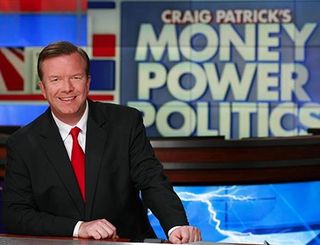Fox Stations Hit the News Button

Between what’s airing on fox O&O KTVU and its sister station KICU, recently rebranded KTVU Plus, there’s no shortage of local newscasts in the San Francisco area.
In April, KTVU added half-hours to both its noon and 6 p.m. newscasts, as well as an entirely new 9 a.m. newscast on KTVU Plus that scraps the traditional format of the previous two hours, according to Dana McDaniel, the station’s VP of news. The Nine’s three hosts each hail from a different region of the Bay Area, offering different points of view throughout the newscast, which is less scripted than typical programming. Broadcast from the sales department’s upper-floor offices, The Nine uses the Oakland Estuary—water, boats and birds—as a backdrop.
The additions, the latest in a series since Fox bought the stations in 2014, bring the stations’ total weekly news output to nearly 66 hours, up roughly 20 hours this year alone. “This is a huge market, and it requires that kind of attention if you want to talk about local news,” McDaniel said. “We want to be there when our viewers want to watch news.”
KTVU is one of the more aggressive Foxowned stations in terms of news expansion, but it’s hardly alone. Fox O&Os in cities across the U.S.—including Detroit, Philadelphia, Chicago and Washington—are ramping up news programming. That means extending existing newscasts and launching new ones, as well expanding other kinds of news programming, such as political shows.
Sharri Berg, Fox TV Stations senior VP of news operations, said the growth is in keeping with the group’s longstanding commitment to airing news at non-traditional times and, in some cases, non-traditional formats. Each expansion is market-dependent, tailored to engage particular audiences, she said.
Moving forward, Berg said she sees big possibilities for Fox stations at 11 p.m. “to do anything but that cookie-cutter local newscast.” Fox stations traditionally air late news at 10 p.m.
The homogeneity of rivals’ 11 p.m. newscasts “gives us a real opportunity to use new tools to engage viewers, do more compelling storytelling and not just extend what we’ve done the previous hour,” she said.
Broadcasting & Cable Newsletter
The smarter way to stay on top of broadcasting and cable industry. Sign up below
Group execs say there are a number of factors driving the current expansions. Some markets, including Washington and Tampa, Fla., are expanding offerings to provide more coverage of this year’s general election. In other cases, stations are leveraging their news operations to fill holes left by a shortage of syndicated programming.
In addition, the current expansions, Berg said, are natural extensions of the group’s strategy of being heavy on local news, which started with the launch of 9 a.m. news roughly a decade ago. Fox Stations’ total weekly output—889.5 hours—is more than any other network group, she noted, adding, “Our philosophy is you expand news out of strength.” In Chicago, for example, WFLD will be adding a one-hour 5 p.m. newscast in July. Detroit’s WJBK, however, has plans to go up against the Big Three network nightly newscasts by adding an extra half-hour to 6 p.m. news. The second half-hour will be notably different from the first, with “its own character” including lifestyle discussions and other light content, said VP and news director Kevin Roseborough.
In August, WTXF Philadelphia plans to launch what news director Jim Driscoll describes as an “anti-network” 11 p.m. newscast. The show will offer a higher story count, faster pace and more user-generated content than most traditional newscasts. The newscast will also make weather “a prominent part” of the first five to seven minutes of the show, he said. Sports coverage will feature commentary rather than scores, Driscoll said.
Meanwhile in Tampa, WTVT is getting ready to take its Sunday-night political show, Money, Power and Politics, daily. The program will be completely focused on things affecting people during the political process—candidates, local elections and regional government among them—with a satirical tone. Washington’s WTTG will air an extra half-hour of news at 6:30 p.m. specifically to offer enhanced election coverage. The addition will start with the presidential conventions and end with the election.
While success is hardly guaranteed, “we really like to take risks and try new things whatever the outcome is,” Berg said. “Sometimes some of the best ideas come just from experimenting, and giving [stations] that latitude to try new things.”
